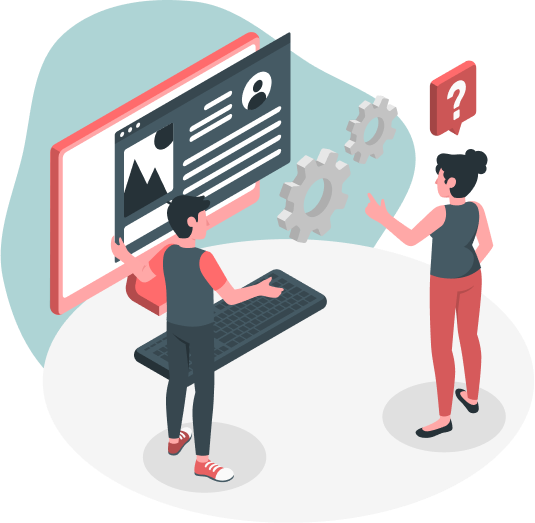Tomorrow’s Creative Careers: How Backcasting Helps CCIs Navigate What’s Next
NEXTATLAS x EKIP
The future of creative work is arriving faster than most institutions can adapt. We unpack Nextatlas’ contribution to the EKIP project, using backcasting and cultural-signal intelligence to map tomorrow’s creative careers — from Interactive Storytellers to AI Ethicists and Heritage Strategists. These emerging roles will evolve, requiring hybrid skills, and systemic change Europe needs to support a future-ready CCI workforce.

The Cultural and Creative Industries (CCIs) are undergoing a rapid transformation, driven by emerging technologies like AI and immersive realities. This fast-moving landscape presents a crucial challenge: how do we effectively guide current professionals toward the emerging career opportunities of tomorrow? Our foresight exercise addresses this question by mapping actionable career paths from the future back to the present. You can read more about it in our Futures4Europe article by our Insights Specialist, Greta Cappellini, here.
Why the Future of Creative Work Needs a New Approach
Across Europe’s CCIs, the ground is shifting quickly. Automation, spatial computing, AI-driven production, and new modes of cultural participation are redefining what creative work looks like. Yet the systems that shape talent — from education to policy to professional development — remain anchored to older assumptions about what creatives do and how careers unfold.
Within the EKIP (European Cultural & Creative Industries Innovation Policy Platform) project, Nextatlas explored how foresight can support this transition. Our objective was to clarify what tomorrow’s creative roles may become, and how today’s professionals can realistically move toward them.
Backcasting became central to this effort. Rather than forecasting linearly from the present, backcasting begins with a targeted future role and works backward, revealing the skills, transitions, and career milestones required to reach it. This method, combined with Nextatlas’ cultural-signal detection and job-market mapping, transforms unclear “future skills” into concrete career pathways.
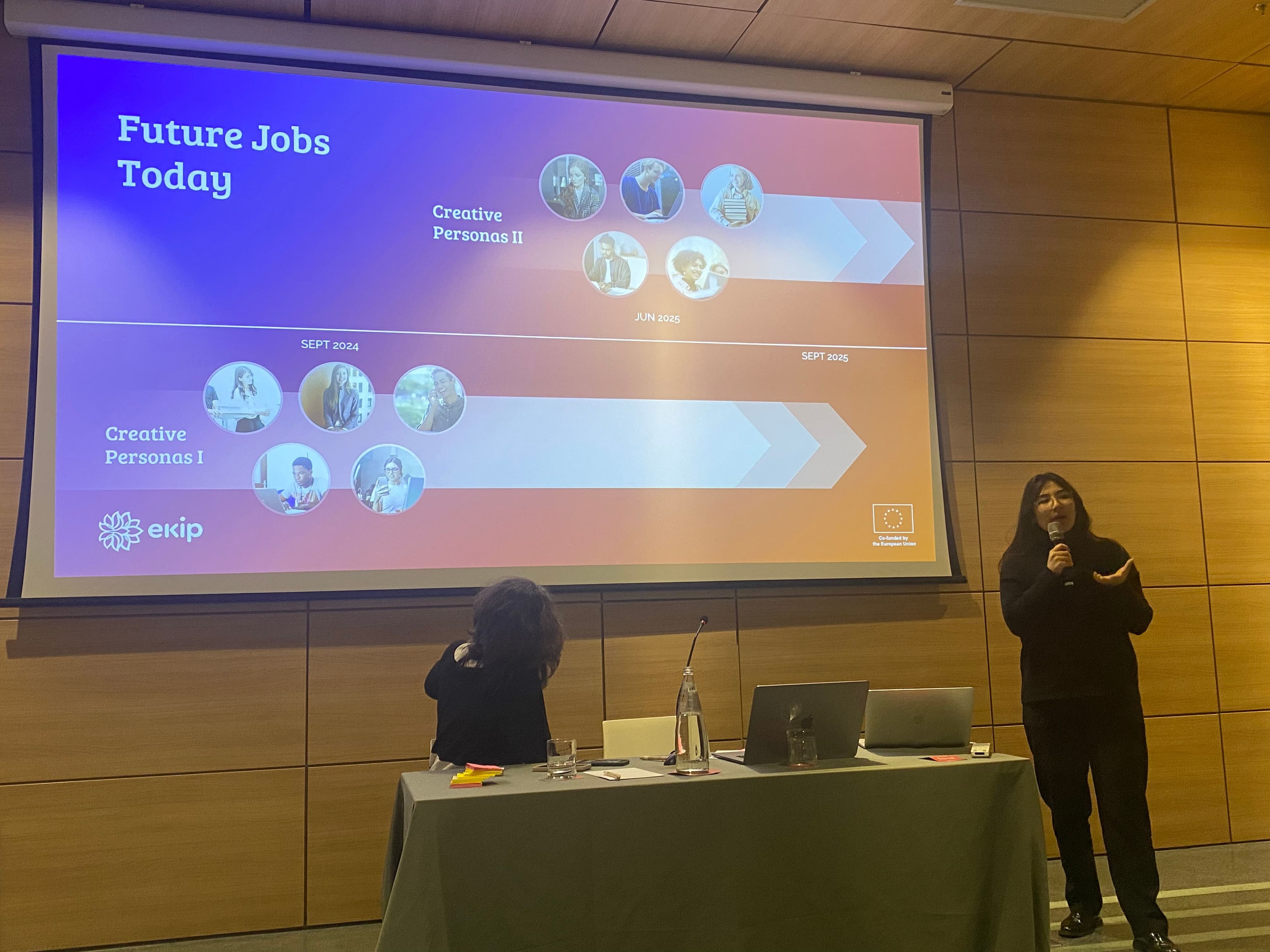
Our Head of Insights, Debora Bae, presenting our backcasting work at EKIP's seventh general assembly in Turin, October 2025
Why Backcasting Matters for the Creative Workforce
Backcasting solves a critical gap: instead of extrapolating today’s roles forward, it begins with what the future should look like, then traces the practical route back to present-day talent.
For the EKIP project, this meant transforming early signals into career maps, skill clusters, and professional trajectories that allow:
- cultural organisations to update training and hiring priorities
- policymakers to identify where systemic support is needed
- professionals to navigate shifting expectations with agency
- universities and VET providers to redesign curricula proactively
The result is a future-ready understanding of how creative labour will evolve — and what individuals and institutions must do to keep pace.
Three Emerging Profiles Reshaping the CCIs
Using cultural trend signals from our proprietary AI, job-market data, and qualitative insights, we translated signals into actionable workforce insights and developed three future-leaning creative personas based on early evidence: the Interactive Storyteller, the AI Ethicist, and the Heritage Strategist. Each reveals a different frontier of cultural innovation and the hybridisation shaping tomorrow’s jobs in the CCIs.
1. The Interactive Storyteller
A creator of participatory, multisensory narratives across games, XR, installations, and transmedia environments. This role reflects a shift from passive consumption to audience agency, where stories unfold dynamically and adaptively. This is a hybrid creator who blends dramaturgy, spatial design, real-time engines, and systemic storytelling.
As the CCIs shift toward co-creation and immersive culture, narrative must adapt to dynamic environments. This profile reflects the rise of participatory media ecosystems, where meaning is shaped through interaction, not broadcast.
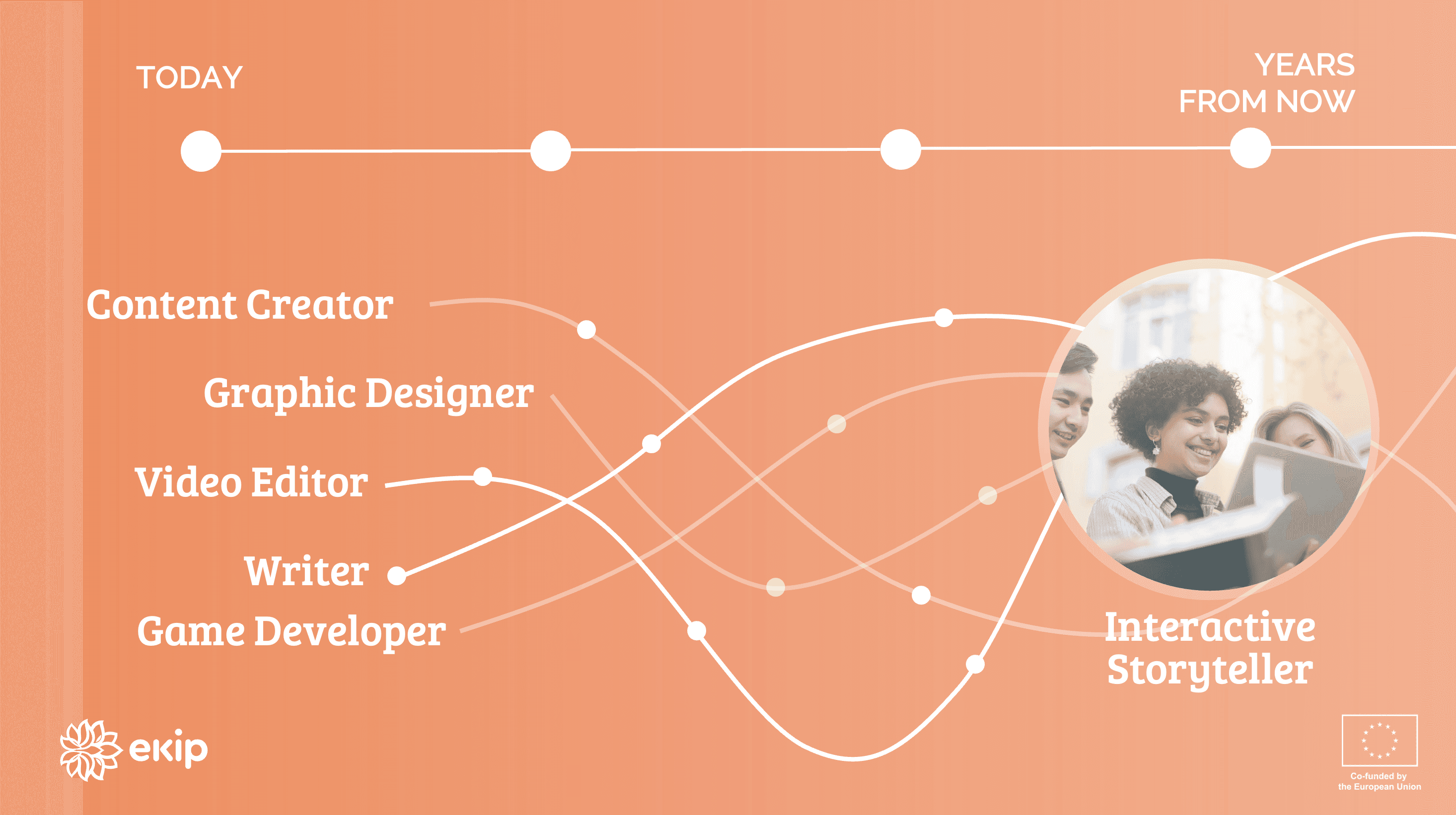
2. The AI Ethicist
A specialist navigating the ethical dilemmas emerging from AI use in cultural creation, media production, and heritage management. This profile emerges naturally from roles rooted in critical analysis, bias evaluation, and linguistic expertise. This is a specialist who defines governance frameworks, identifies algorithmic risk, ensures cultural equity, and guides compliance across creative institutions.
CCIs need talent capable of navigating generative authorship, data consent, provenance, cultural bias, and legal uncertainty. The AI Ethicist bridges creative intuition with technical and regulatory fluency.
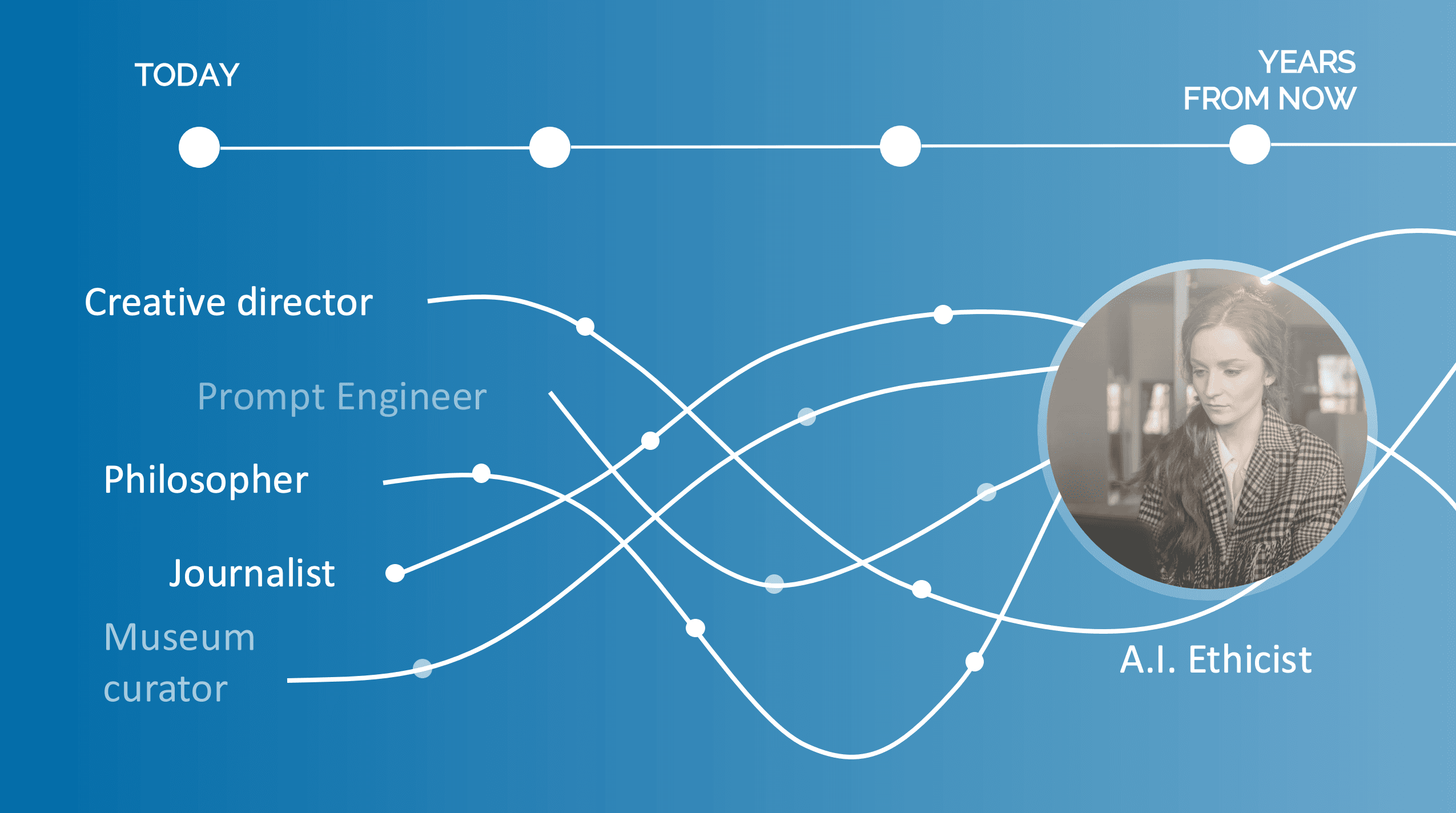
3. The Heritage Strategist
A role integrating preservation, digital innovation, community engagement, and long-term sustainability. The Heritage Strategist moves heritage from a static archive to a living, participatory ecosystem. This is a strategist who orchestrates partnerships, leverages immersive and digital tools, shapes policy, and steers long-term funding.
Heritage is shifting from static conservation to active stewardship. This role responds to new expectations around accessibility, storytelling, participatory interpretation, and financial sustainability.

What These Roles Tell Us About Tomorrow’s Skills Landscape
Looking across all three personas, a clear macro-pattern emerges: future creative roles are hybrid, interdisciplinary, and technologically interwoven. The roles themselves differ, but the demands shaping them overlap.
1. Hybrid Skillsets Are Becoming the Norm
The future CCI workforce will blend artistic intuition with advanced technology, ethical literacy, and strategic thinking. From AR/VR prototyping to narrative systems design and AI-tool fluency, the skills map is expanding far beyond traditional creative training.
2. Mid-Career Professionals Face a Structural Risk
The gap between traditional education and emerging tools widens each year. Without accessible upskilling, many experienced creatives risk being left behind — not because of a lack of talent, but because the technological environment is evolving faster than training structures.
3. Creative Work Now Demands More Cognitive Agility
Tomorrow’s jobs require the ability to move fluidly across disciplines:
- critical thinking alongside technical literacy
- storytelling together with behavioural insight
- design intuition merged with ethical reasoning
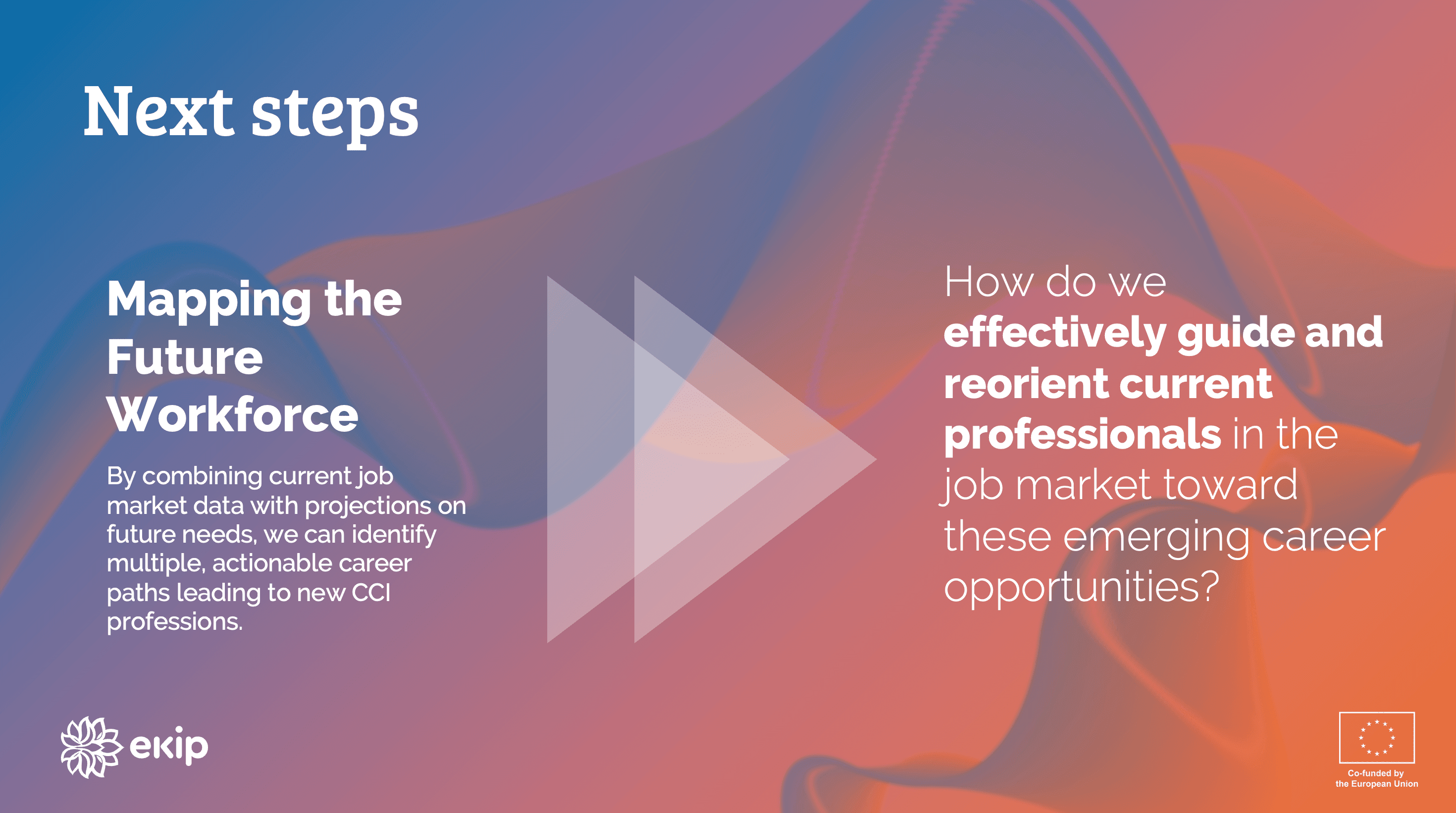
Why Backcasting Is a Turning Point for CCI Workforce Strategy
Backcasting makes one thing clear: the future of creative labour is not abstract — it is already emerging in early, fragmented forms. By mapping trajectories instead of simply listing skills, we can guide professionals with clarity instead of vague speculation.
The implications are straightforward but profound. Education systems need to evolve at the pace of technology. Mid-career workers require robust, ongoing opportunities to reskill. Institutions must create spaces where cross-sector collaboration becomes the norm rather than the exception. And long-term investment will be essential to support the innovation required of these new professions.
For Nextatlas, this work sits at the intersection of foresight and practical transformation. By combining cultural-signal intelligence with structured career backcasting, we help policymakers, institutions, and professionals anticipate — and prepare for — the creative roles that will shape Europe’s cultural future.
Trend lines, data, and information described in this article emerge from the ongoing analysis performed by Nextatlas on its global observation pool made of innovators, early adopters, industry insiders expressing their views on Twitter, Instagram, and Reddit.
To learn more about our AI, discover Nextatlas Methodology here
Related articles:
Italy
Torino - Via Stampatori 4, 10122(Operational headquarter)+39 011/0864065VAT number and registration number at the Registro delle Imprese di Cagliari: 03428550929 paid share capital € 167.740,00 — © 2024 iCoolhunt SpA.
